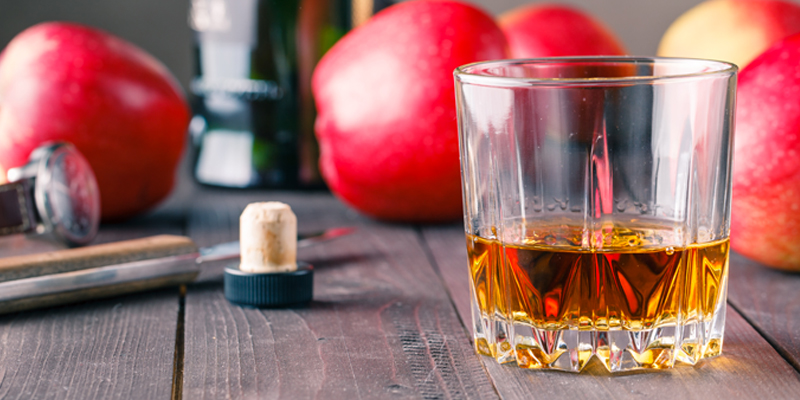Mid-October weekends scream for fall festivities: hay rides, pumpkin patches and, of course, apple picking. Despite pumpkin spice getting all the seasonal hype, apple is just as strong a flavor candidate for all things food and booze. After apple picking, we’re carrying on this delectably fruity theme with the king of apple brandy itself — Calvados.
So, what is Calvados? Calvados finds its origins in Normandy, France and is created from distilled cider made from over 200 varieties of apples ranging from sweet to tart to bitter. Post-harvest, the fruit is pressed into juice and fermented into dry cider. The cider is is then distilled into an eau de vie and aged in oak casks. After two years, the product can be sold as Calvados, though the longer the eau de vie stays in contact with oak, the smoother the final product will be. Some appellations of Calvados require double distillations, while other appellations permit it without making it a requirement. Distillation takes place in column stills.
A single bottle of Calvados is generally composed of various Calvados of differing ages; the age denoted on a Calvados bottle refers to the youngest part of the blend. “Fine,” “Trois étoiles,” or “Trois pommes” are the youngest, with a minimum age of two years. “Vieux” or “Reserve” designate a minimum of three years’ aging, while “VO,” “Vielle Reserve,” and “VSOP” constitute a minimum of four years of age. “Extra,” “XO,” and “Napoleon” have a minimum of six years, though they can be significantly older. Single-vintage Calvados is produced during extremely good years and will be denoted on the bottle.
For a similar domestic alternative, Applejack is your guy. This powerful, apple-based drink became popular during colonial times, with the first legal applejack distillery, Laird & Company, taking roots in New Jersey. Applejack was traditionally made via freeze distillation, which requires leaving concentrated cider out during the winter, with water content freezing and then removed, leaving the remaining cider highly concentrated prior to distillation.
Calvados can be consumed in many ways. Traditionally, it is consumed between courses of long dinners to re-stimulate the appetite, but can also be taken as an aperitif before the meal or as a digestif to close it out. Calvados is also an incredible cocktail ingredient. See two of our favorite recipes below.
Calvados Royal
1 oz Calvados
.75 oz strawberry liquor
3.25 oz of Champagne (or sparkling wine)
Direction: In a coupe, strain the strawberry liquor and the Calvados. Complete with Champagne.
Calvados Side Car
1.5 oz Calvados
.75 oz orange liqueur
.75 oz lemon juice
Directions: Pour the orange liqueur with lemon juice and Calvados in a shaker. Shake with ice and strain into a glass. Garnish with orange zest.
Recipes courtesy of www.calvados-cocktails.com

